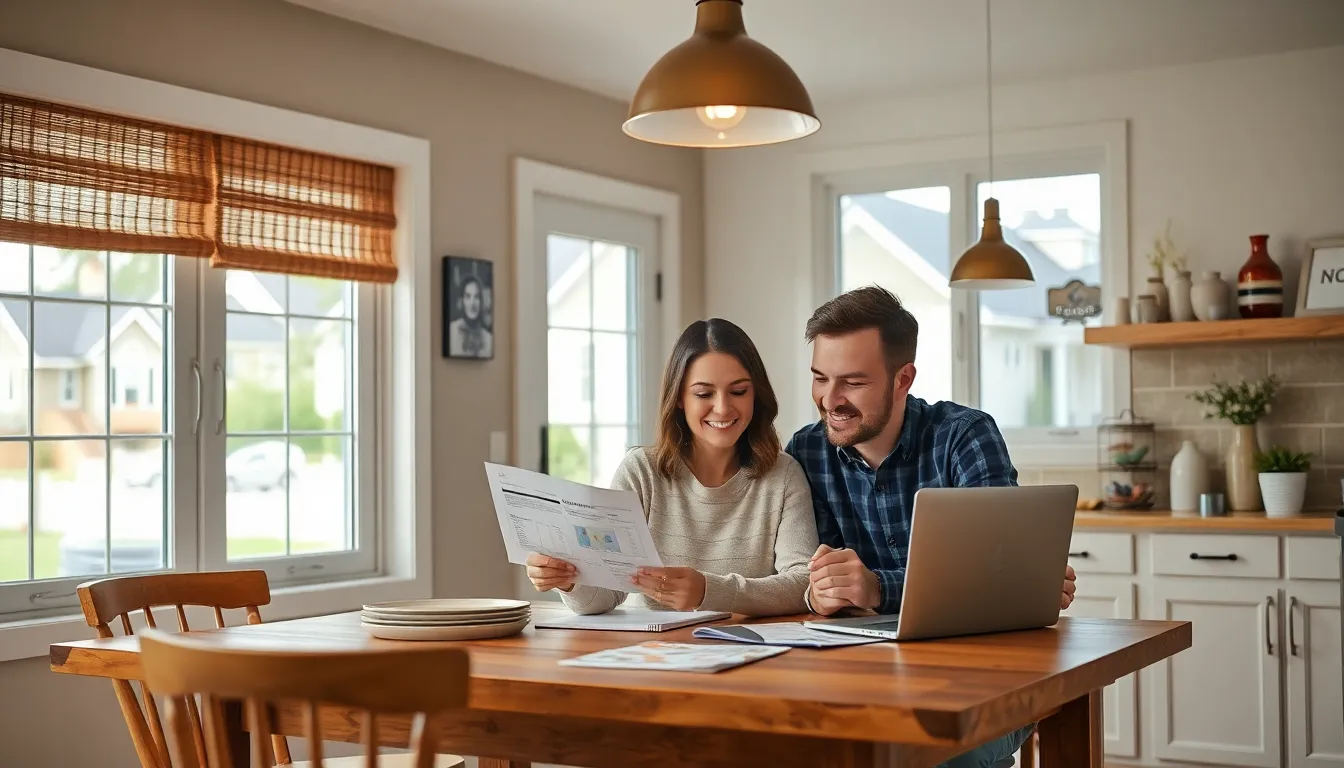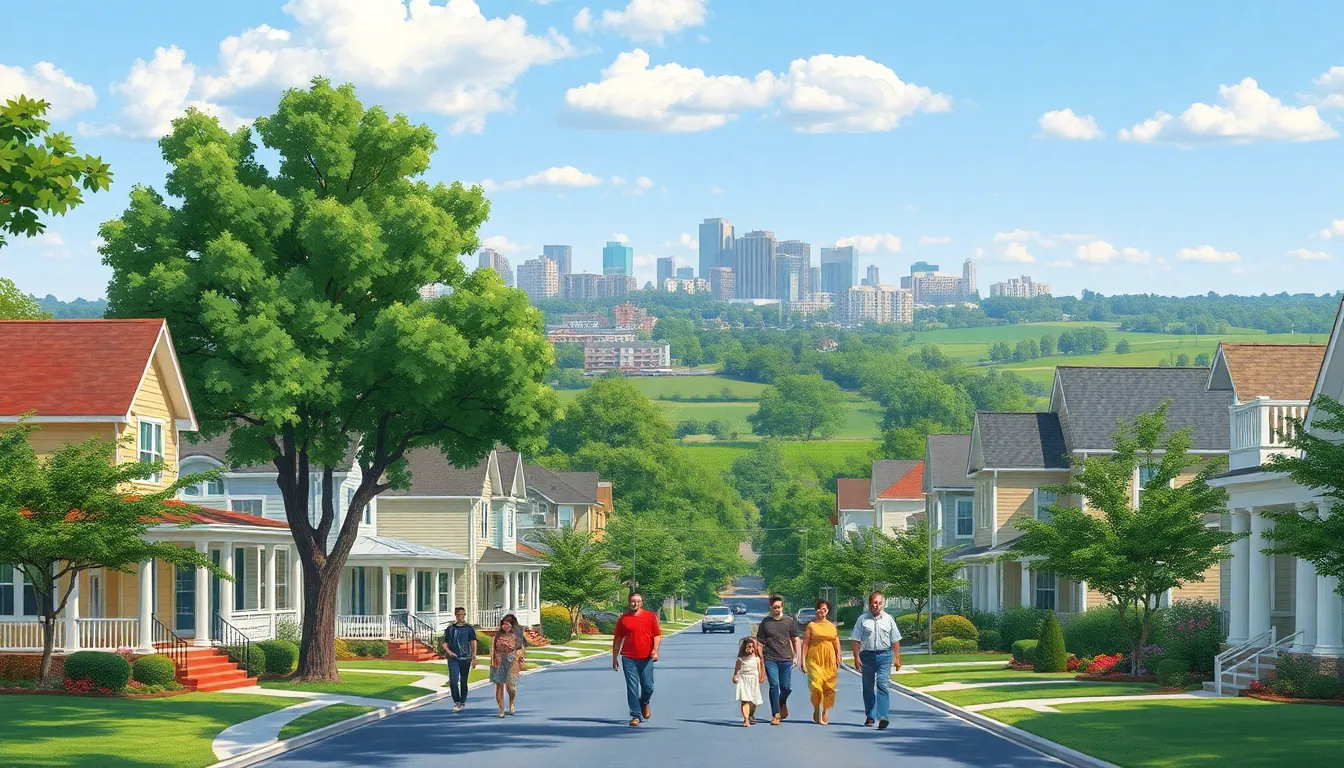Owning a home is often seen as a cornerstone of the American Dream, but it’s not just about the mortgage payment. Homeownership comes with a range of costs that can catch even the most prepared buyers off guard. From property taxes and insurance to maintenance and utilities, these expenses can add up quickly, impacting monthly budgets and long-term financial plans.
Understanding the true cost of homeownership is crucial for anyone considering taking the plunge. It’s not just about buying the house; it’s about sustaining it over time. By exploring the various expenses associated with homeownership, buyers can make informed decisions and avoid financial pitfalls. Whether you’re a first-time buyer or looking to upgrade, knowing what to expect can lead to a more successful and satisfying homeownership experience.
Table of Contents
ToggleUnderstanding Homeownership Costs
Homeownership costs encompass various expenses, many of which extend beyond the mortgage payment. Recognizing both initial purchase costs and ongoing costs plays a crucial role in financially preparing for homeownership.
Initial Purchase Costs
Initial purchase costs include expenses incurred when buying a home. These costs typically involve:
- Down Payment: A percentage of the home’s price. Typically, this ranges from 3% to 20%, depending on the loan type.
- Closing Costs: Fees associated with finalizing the purchase. Closing costs can amount to 2% to 5% of the loan amount.
- Home Inspection: A detailed examination of the property. Home inspections typically cost between $300 and $500.
- Appraisal Fees: Assessments of the home’s market value. Appraisal fees generally fall between $300 and $700.
- Homeowners Insurance: Protection against damage and liability. Annual premiums average $1,000 to $3,000, varying by location and coverage.
- Property Taxes: Taxes levied by local governments. Property taxes average 1.1% of the property’s assessed value annually.
Ongoing Costs
- Mortgage Payment: Monthly payments include principal and interest. The amount varies based on loan terms and interest rates.
- Property Taxes: Ongoing taxes based on property value. Homeowners pay these taxes annually or semi-annually.
- Homeowners Insurance: Necessary for financial protection. Homeowners pay premiums periodically, usually annually or monthly.
- Maintenance and Repairs: Costs for upkeep and repairs. Homeowners can expect to budget about 1% to 2% of the home’s value annually for maintenance.
- Utilities: Monthly costs for services such as electricity, water, and gas. Utility expenses average around $200 to $400 per month, depending on home size and location.
- HOA Fees: Fees for homeowners associations in certain communities. These fees can range from $100 to $500 monthly.
Factors Influencing Homeownership Costs

Homeownership costs fluctuate based on various factors, making it essential for prospective buyers to gauge these variables for effective budgeting. Two significant factors are location and property type.
Location
Location significantly impacts homeownership costs. Home values often increase in urban areas due to the demand for housing, leading to higher property taxes and insurance premiums. In contrast, suburban and rural regions typically offer lower costs. According to the National Association of Realtors, as of 2023, average home prices in urban centers can be 20-30% higher than comparable suburban or rural properties. Transportation access, local amenities, and school district quality also contribute to location-based cost variations.
Property Type
Property type plays a critical role in determining homeownership costs. Single-family homes often have different costs compared to condominiums or townhouses. For instance, single-family homes usually come with higher maintenance costs due to larger square footage and yards. Condominiums often present lower purchase prices but collect monthly HOA fees which cover maintenance and amenities. A study by Zillow states that maintenance costs for single-family homes can average between 1-3% of the home’s value annually, while condo fees may range from $200 to $800 monthly depending on services provided. Understanding these distinctions helps buyers anticipate ongoing expenses more accurately.
Hidden Expenses of Homeownership
Homeownership involves various hidden expenses that homeowners often overlook. Understanding these costs is vital for effective budgeting and long-term financial planning.
Maintenance and Repairs
Maintenance and repairs represent ongoing costs that accumulate over time. Homeowners should allocate about 1% to 3% of the home’s value annually for general upkeep. Regular tasks such as lawn care, plumbing, and HVAC system checks require attention, and unexpected repairs can arise at any moment. For example, a roof replacement can cost between $5,000 and $10,000, while significant plumbing issues may exceed $1,000. Prioritizing a home maintenance schedule minimizes larger repair costs and ensures the property’s longevity.
Property Taxes
Property taxes can significantly impact a homeowner’s financial obligation. These taxes typically range from 0.5% to 2.5% of the home’s assessed value annually. Rates vary by state and local municipality, making it crucial for buyers to research specific tax rates in their desired location. For instance, property taxes in New Jersey average around 2.42%, while in Hawaii, they average 0.27%. Homeowners should expect to pay property taxes as part of their monthly mortgage payments or set aside funds for annual payments to avoid surprises.
Financing Homeownership Costs
Financing homeownership costs involves understanding various financial obligations that extend beyond the purchase price. This section focuses on mortgages, interest rates, and insurance costs to provide clarity for prospective buyers.
Mortgages and Interest Rates
Mortgages form the foundation of most homeownership financing plans. When securing a mortgage, buyers choose between fixed-rate and adjustable-rate options. Fixed-rate mortgages maintain consistent monthly payments, providing stability over time. Adjustable-rate mortgages may offer lower initial rates that fluctuate based on market conditions.
Interest rates directly affect borrowing costs. In 2023, average mortgage rates range from 6% to 7% depending on market trends and borrower profiles. A lower interest rate can significantly reduce total payment amounts over the loan’s life. Buyers often benefit from comparing offers from different lenders to find the best rate. It’s advisable to work with a mortgage broker for personalized guidance.
Insurance Costs
Insurance costs add another layer of financial responsibility for homeowners. Homeowners insurance protects against risks such as theft, fire, and natural disasters. In the U.S., the average homeowners insurance premium typically ranges from $1,000 to $1,500 annually.
Buyers should also consider additional coverage options like flood or earthquake insurance, depending on their location. Lenders often require homeowners insurance to approve a mortgage, thus emphasizing its importance. Regularly reviewing and adjusting insurance coverage can aid in maintaining adequate protection while optimizing costs.
Understanding the full scope of homeownership costs is vital for anyone considering a purchase. It’s not just about the mortgage; various ongoing and hidden expenses can significantly affect financial stability. By recognizing initial and ongoing costs, prospective buyers can prepare themselves for the responsibilities that come with owning a home.
Additionally, factors like location and property type play a crucial role in determining these costs. By doing thorough research and budgeting effectively, homeowners can navigate the complexities of homeownership with confidence. This proactive approach ensures they’re ready for both expected and unexpected financial obligations, paving the way for a successful and sustainable homeownership experience.






